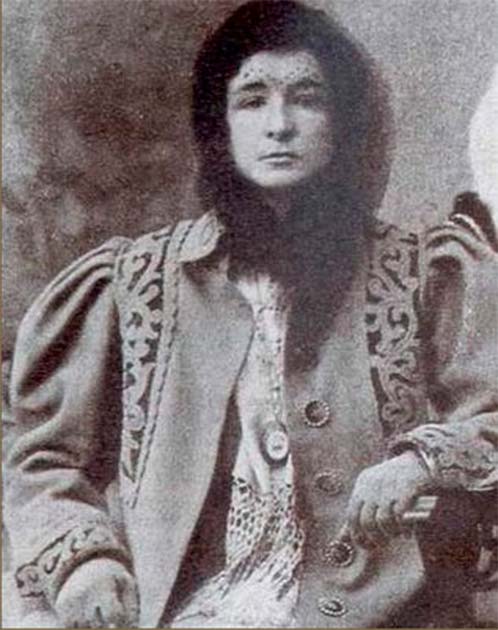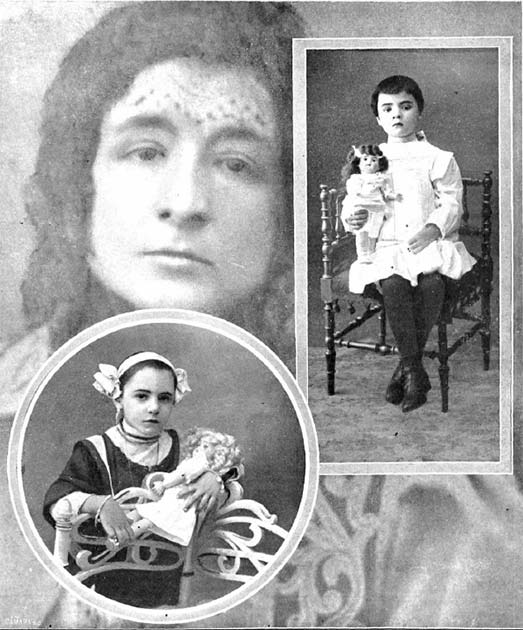Enriqueta Marti was a notorious figure in the dark alleys of Barcelona in the early 1900s. She ran a specialist brothel, catering to some of the city’s most prominent figures, including doctors, politicians, businessmen, and bankers.
This gave her a certain amount of respect, but as the rumors about her activities became more and more known, even this could not protect her. She would become known as “The Vampire of Barcelona” and was believed to be involved in child trafficking, kidnapping, and even murder.
Her crimes eventually caught up with her, and her arrest led to the discovery of a treasure trove of curious items in her apartment, including an ancient book, a book of recipes and potions, a package of coded letters and notes, and a controversial list of names. This is the story of Enriqueta Martí and the secrets that she took to her grave.
Who was Enriqueta Marti?
Enriqueta Marti was born in Sant Feliu de Llobregat in 1868. Not much is known about her early years except that as a young woman, she left her hometown to work as a maidservant and nanny in Barcelona. Unhappy in that profession, she soon began working as a prostitute in a high-class brothel.
In 1895 she met and married a painter called Juan Pujalo. It was an unhappy marriage and they soon separated. According to her ex-husband, the relationship failed because Marti was perpetually unfaithful, having constant affairs and repeatedly visiting brothels.

In 1909 Marti opened her own “specialist” brothel aimed at serving Barcelona’s rich and powerful. It catered to those whose “tastes” could not be satiated elsewhere, in particular, pedophilia.
In the daytime, she would visit the poorest regions of Barcelona, dressed as a pauper. She would join begging queues and abduct any unaccompanied children. Once she got them back to her brothel she would prostitute them to her wealthy clientele.
By night Marti would visit the hangouts of Barcelona’s rich and famous, like the El Liceu and the Casino de la Arrabassada, where she let it be known she could get them what they wanted. It seems she had no lack of customers.
But it isn’t being a procurer of children that Marti is famous for. Somehow, it’s even worse. At the same time as she was prostituting children, she was also working as a witch doctor. Marti claimed that drinking the blood of children could cure tuberculosis while creams and elixirs made from their skin and bones could stop aging and make one feel youthful again.
- The Blood Countess of Hungary: Was Elizabeth Báthory a Vampire?
- Baron Gilles de Rais, History’s Earliest Serial Killer?
The products that Marti offered came from the bodies of her victims. Using their fat, blood, and bones she made everything from salves and ointments to “magic” potions. By the time she was done with them, there was very little left of her victims, who were all 5-15 years old.
How Did She Get Away With It?
This begs the question of how did she get away with killing for so long? Surely someone missed these children she was abducting.
Well, eventually news did get out that there was something very, very wrong at 29 Carrer Ponent, where Marti had her brothel. During the last week of July 1909 police raided Marti’s flat. They arrested her and a young man from a wealthy local family there and then on suspicion of running a brothel that used children.
Her story should have ended then. But luckily for Marti, many of her clients came from Barcelona’s high society. The case was dropped, and she was never tried. She had friends in high places.
Over the next three years, children continued to disappear. Marti’s victims were all from poor families, however, and police investigations into the disappearances were minimal. Often the families were glad to have one less mouth to feed and the police weren’t going to expend resources looking for missing street urchins.
It isn’t known exactly how many children she kidnapped and killed during her 20-year reign of terror. Some have estimated it to be as low as the low teens while others have put the number in the dozens.
Things began to finally go wrong for Marti on February 10, 1912, with the kidnapping of Teresita Guitart Congost. Unlike her other victims, this child was missed, and the people of Barcelona turned the city upside down trying to find her.
One of Marti’s neighbors had been growing suspicious and just so happened to see a little girl staring out of Marti’s window. A little girl she had never seen before but who matched Teresita’s description. She confronted Marti about the girl, but Marti refused to answer her.
The neighbor’s concerns quickly found their way to the police who sent two agents to look for Marti. Upon finding her they told her there had been complaints that she was keeping chickens in her flat. She fell for the ruse and allowed the agents into her home.
Within Marti’s flat the policemen found two young girls, the missing Teresita and another girl, Angelita. They told the police how they had been lured to Marti’s flat with the promise of candy. Once there she had shaved their heads, renamed them, and told them she was their new mother.
Teresita told the police that while Marti out one day the two girls had decided to explore the flat. They had found a sack full of bloody children’s clothes and a boning knife, also covered in blood. Angelita’s statement was even more terrifying.

Angelita told police that before Teresita, there had been a 5-year-old boy. She had seen Marti kill and dissect him on the kitchen table. Angelita’s true identity was even a mystery. The girl did not know her real name and Marti insisted the child was hers, by her ex-husband (who declared she was lying, and he had no idea where she had gotten the child).
The police detained Marti and searched the flat. It was a house of horrors. Not only did they find the bloody sack of clothes but at least 30 small bones. Most disturbingly, in a locked room they found 50 different containers filled with preserved human remains.
The police then visited Marti’s previous abodes. Behind false walls, they found similar horrors. Using the rudimentary forensics of the time police estimated they had found the remains of at least 12 children, in parts.
At Martí’s apartment, they discovered several intriguing items including an ancient book bound in parchment, a notebook containing elegantly calligraphed recipes and potions, a bundle of letters and coded notes, and a roster containing the names of notable families and figures in Barcelona.
The list stirred controversy as the public suspected it was a record of Marti’s affluent clients, who they believed may have avoided punishment for their crimes of pedophilia or purchasing human remains for medicinal purposes due to their wealth. The government tried to keep the list quiet, but rumors persisted for years as to whose names were on the list.
The End
Marti was imprisoned in the Reina Amalia jail to await her trial. While there she attempted to commit suicide by slashing her wrists with a wooden knife. The attempt failed and Marti survived, but there was a public uproar. They wanted Marti executed for what she had done.
She never did see justice. Just over a year after her arrest, Marti was beaten to death by some other inmates. Many believe that rather than a vengeance killing, the inmates had been paid by some of Marti’s connected clients. Adding to the mystery, her death certificate listed cancer as the cause of death.

Enriqueta Marti’s story seems too awful to be true. How did she get away with it for so long and what was going on in the minds of those who covered up her heinous acts for so long? After all, it wasn’t just her clients who helped her get away with it, local officials actively tried to protect those on her client list.
Despite the efforts of the police to keep the list under wraps, rumors and speculation continued to circulate, fueling conspiracy theories and stirring up public outrage. It was a shocking reminder that even in the supposedly civilized society of early 20th-century Barcelona, the rich and influential could still get away with unspeakable acts of depravity and violence. It was, and is, a travesty that no one ever faced justice for.
Top Image: Enriqueta Marti got away with murdering children for two decades. Source: Andrey Kiselev / Adobe Stock.